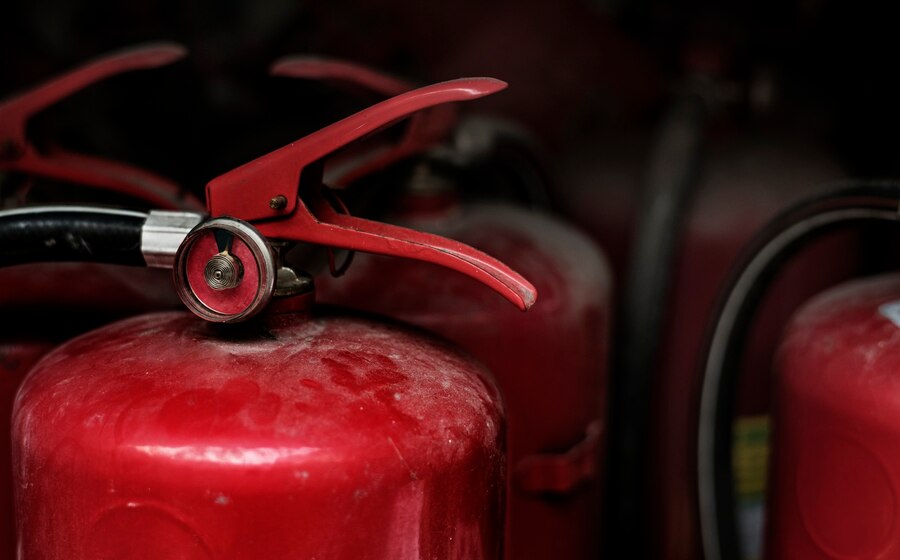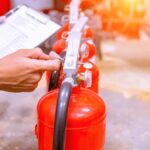Fire safety is a critical component in any residential, commercial, or industrial setting. One of the most important systems for ensuring fire safety is a fire suppression system. Whether you’re a building manager, business owner, or safety professional, understanding fire suppression systems is essential—not only for protecting lives and property but also for meeting local and national fire codes and regulations.
In this article, we’ll explore what fire suppression systems are, how they work, the different types available, their benefits, and why compliance is crucial.
What is a Fire Suppression System?
A fire suppression system is a group of units designed to extinguish, control, or prevent the spread of fire in a building or facility. Unlike fire alarms that only detect and alert occupants, suppression systems actively work to combat fires. These systems are typically automatic, responding quickly when a fire is detected to minimize damage and provide safety.
Fire suppression systems are commonly found in places like data centers, restaurants, warehouses, hospitals, manufacturing plants, and commercial buildings where fire hazards are high and response time is critical.
How Does a Fire Suppression System Work?
Fire suppression systems are engineered to detect the early stages of a fire and respond automatically. Here’s a basic breakdown of how they operate:
-
Detection: Sensors detect smoke, heat, or flames.
-
Activation: Once the fire is detected, the system activates. Some systems release a suppressant automatically; others might require manual activation.
-
Suppression: The system discharges a fire-suppressing agent such as water, foam, gas, or chemicals to extinguish or control the fire.
The goal is to act fast, contain the fire at its source, and prevent it from spreading until emergency services arrive.
Types of Fire Suppression Systems
There are several types of fire suppression systems, each suited to different environments and fire risks. Here are the most common:
1. Water-Based Fire Suppression Systems
-
Sprinkler Systems: These are the most widely used fire suppression systems. When the system detects high temperatures, water is released through sprinkler heads directly above the fire.
-
Mist Systems: These use fine water sprays to absorb heat and displace oxygen, reducing damage compared to traditional sprinklers.
Best for: Office buildings, hotels, and general commercial properties.
2. Chemical-Based Systems
-
Wet Chemical Systems: Designed primarily for kitchen environments, these systems release a chemical that reacts with cooking oils and fats to smother flames and cool the fire.
-
Dry Chemical Systems: Used in industrial settings, they discharge a powder that disrupts the chemical reaction of a fire.
Best for: Commercial kitchens, food trucks, paint booths, and industrial facilities.
3. Gas-Based Fire Suppression Systems
-
Clean Agent Systems (e.g., FM-200, Novec 1230): These systems release a gas that extinguishes fire without leaving residue, making them ideal for sensitive equipment.
-
CO2 Systems: Carbon dioxide systems remove oxygen, effectively suffocating the fire. However, they can be dangerous to humans in confined spaces.
Best for: Server rooms, data centers, archives, and electronics-heavy environments.
4. Foam Suppression Systems
These systems mix foam concentrate with water to form a solution that smothers the fire and prevents re-ignition. Foam is particularly effective for flammable liquids.
Best for: Fuel storage facilities, chemical plants, and aircraft hangars.
5. Aerosol Suppression Systems
These systems release a fine aerosol mist that interrupts the combustion process at a molecular level. They are highly effective in compact spaces.
Best for: Electrical cabinets, engine compartments, and marine vessels.
Importance of Fire Suppression Systems
1. Protects Lives
The most important function of any fire suppression system is to save lives. By controlling or extinguishing fires quickly, these systems reduce the risk of injury or death during an emergency.
2. Protects Property and Assets
Fires can cause catastrophic damage to property, valuable equipment, and inventory. A properly installed fire suppression system minimizes this damage, often preventing total loss.
3. Reduces Downtime
For businesses, fire-related incidents can halt operations for weeks or even months. Fire suppression systems help reduce the extent of damage, allowing for faster recovery.
4. Ensures Compliance with Fire Codes
Local fire codes, building regulations, and insurance requirements often mandate the installation and maintenance of fire suppression systems. Non-compliance can result in fines, lawsuits, or even business closure.
Compliance and Regulatory Standards
Fire suppression systems must meet strict regulatory standards. In the U.S., the following organizations and codes play a major role:
NFPA (National Fire Protection Association)
The NFPA develops codes and standards used worldwide. Key ones include:
-
NFPA 13: Installation of sprinkler systems
-
NFPA 17/17A: Dry and wet chemical systems
-
NFPA 2001: Clean agent fire extinguishing systems
OSHA (Occupational Safety and Health Administration)
OSHA sets standards to ensure safe working environments, including proper fire protection.
Local Fire Departments and AHJs (Authorities Having Jurisdiction)
These entities enforce local codes and perform inspections to ensure compliance with fire safety laws.
Insurance Requirements
Insurance companies may require fire suppression systems to be in place as part of their policy terms. Proper compliance can also reduce premiums.
Installation and Maintenance Considerations
Installing a fire suppression system isn’t a one-size-fits-all process. Here are key factors to consider:
1. Risk Assessment
Before choosing a system, conduct a fire risk assessment to identify hazards, evaluate existing protections, and determine the best type of system for your environment.
2. Professional Installation
Fire suppression systems must be installed by certified professionals to ensure compliance with local and national standards.
3. Regular Inspections and Testing
All systems require regular inspection, testing, and maintenance to remain functional. For example:
-
Monthly visual inspections
-
Annual professional inspections
-
Testing according to NFPA guidelines
4. Employee Training
Ensure staff are trained to understand how the system works, how to activate it manually if needed, and what to do in the event of a discharge.
Choosing the Right Fire Suppression System
When selecting a fire suppression system, consider the following:
-
Environment Type: Is the area prone to grease fires, electrical fires, or flammable liquids?
-
Asset Protection: Are there sensitive electronics that could be damaged by water?
-
Occupancy and Human Safety: Is the system safe for people in the area?
-
Budget and Compliance: Does the system fit your budget and meet code requirements?
Consulting with a fire protection specialist can help you make the right choice.
Future Trends in Fire Suppression
As technology advances, fire suppression systems are becoming more intelligent, efficient, and environmentally friendly.
Smart Suppression Systems
Modern systems are integrated with smart building technologies, offering real-time alerts, remote access, and predictive maintenance.
Eco-Friendly Agents
Clean agents like Novec 1230 are replacing older chemicals with high environmental impact, offering effective suppression with minimal ozone depletion or global warming potential.
Customized Systems
From modular designs for data centers to compact systems for vehicles and homes, customized fire suppression is on the rise.
Final Thoughts
Fire suppression system are a critical element of any comprehensive fire protection strategy. They do more than just respond to fire—they save lives, protect valuable assets, ensure business continuity, and help meet legal obligations.
Whether you’re planning for a new facility or upgrading an existing one, investing in the right fire suppression system is a smart, proactive step toward safety and compliance. Remember to work with certified professionals, stay up to date with fire codes, and maintain your system regularly for optimal performance.


